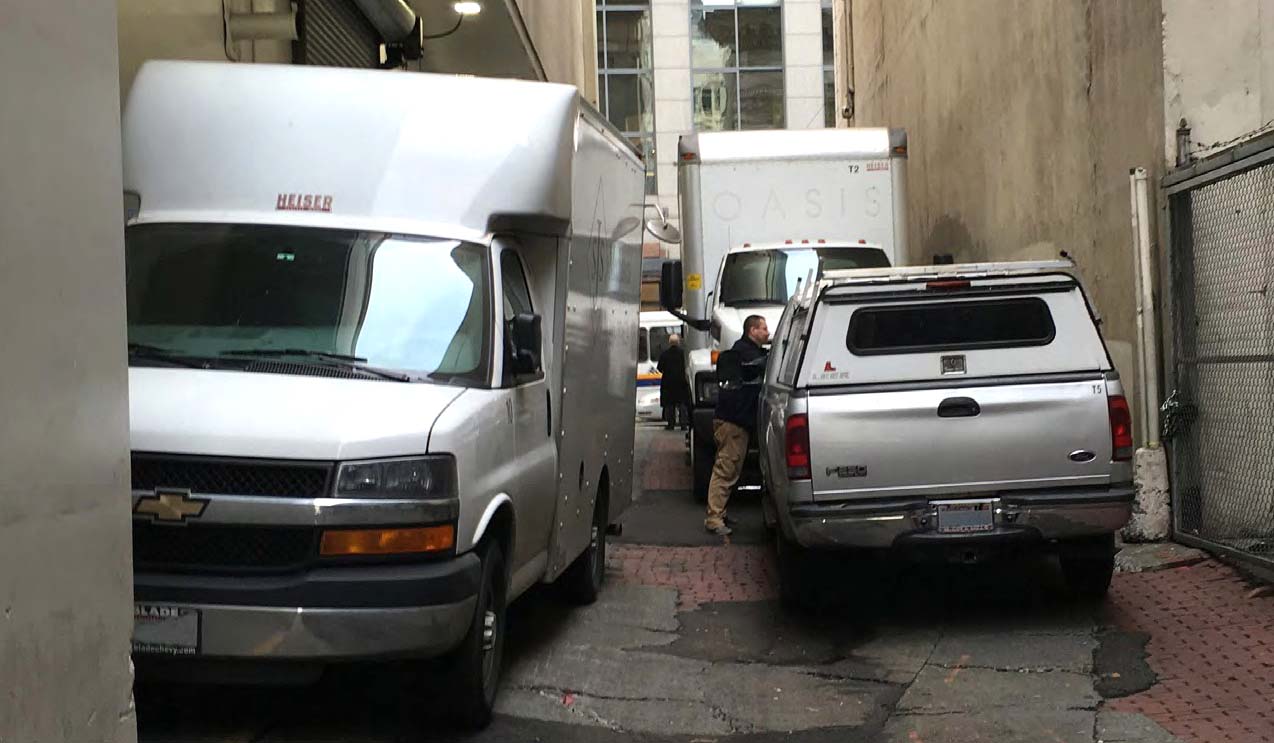The Supply Chain and Transportation Logistics (SCTL) Center at the University of Washington conducted an alley inventory and truck load/unload occupancy study for the City of Seattle. The findings allowed the researchers to develop alley management recommendations to promote safe, sustainable, and efficient goods delivery and pick-up.
Researchers collected data identifying the locations and infrastructure characteristics of alleys within Seattle’s One Center City planning area. That planning area includes the downtown, uptown, South Lake Union, Capitol Hill, and First Hill urban centers. The resulting alley database includes GIS coordinates for both ends of each alley, geometric and traffic attributes, and photos. Researchers also observed all truck load/unload activity in selected alleys to determine minutes vacant and minutes occupied by trucks, vans, passenger vehicles, and cargo bikes.
A key finding of this study was that more than 90 percent of Center City alleys are only one lane wide. This creates an upper limit on alley parking capacity, as each alley can functionally hold only one or two vehicles at a time. Because there is no passing room, when a truck, van, or car parks, it blocks all other vehicles from using the alley. When commercial vehicle drivers see that an alley is blocked, they will not enter it, as Seattle Municipal code prohibits backing out of (or into) an alley.
Another key finding was that 68 percent of vehicles parked in an alley for 15 minutes or less. Therefore, the researchers concluded that moving vehicles through alleys in short time increments is the only reasonable way to increase their productivity. Because one parked vehicle operationally blocks an entire alley, the goal of new alley policies and strategies should be to reduce the amount of time that alleys are blocked to additional users.
Additional key findings included the following:
In the seven alleys studied, 87 percent of all vehicles parked for 30 minutes or less. Given the imperative to move alley traffic quickly, vehicles that need more parking time must be moved out of alleys and to the curb.
The pavement condition of 15 percent of the alleys was found to be so poor that delivery workers cannot traverse them with loaded handcarts. Although trucks can pass over uneven pavement without difficulty, delivery people walking with fully loaded handcarts cannot. The alley pavements were rated by qualitative visual inspection to identify obvious problems; more detailed measurements would be needed to fully assess conditions.
Entrances to passenger parking facilities were found in 73 percent of Center City area alleys. Placing garage entrances in alleys has long been a city policy goal. However, that increases car traffic in alleys. Understanding why cars queue for garage space located off alleys, and providing incentives and disincentives to reduce those queues, would help make alleys more productive.
Alleys were found to be vacant about half of the time during the business day. While this suggests ample capacity, the fact that an alley can hold only one to two parked trucks at a time means that alleys are operationally limited and therefore not a viable alternative to the use of commercial vehicle loading zones on city streets.
The findings indicated that, because of fixed alley width constraints, load/unload space inside Seattle’s existing Center City area alleys is insufficient to meet additional future demand.
Author: Anne V. Goodchild, UW Department of Civil and Environmental Engineering
Sponsors:
Seattle Department of Transportation
PacTrans

